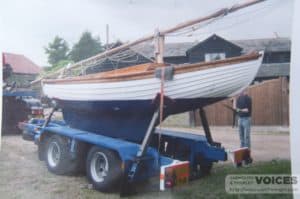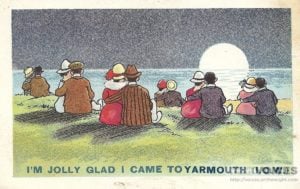I was a pilot and trained out in Canada mostly and then came back to this country. I was scheduled to go onto fighter bombers or something like that but time went on, month after month. Whether we didn’t lose enough of planes or what it was, I just don’t know.
Somebody came down one day and wanted some volunteers to go to the Far East to fly gliders, troop carrying gliders. Now the army had lost a lot of their pilots over at Arnheim and places like that of course, but they had these ready trained pilots all waiting to go somewhere. We went out there and were going to be on operations within six weeks, but we never did see any operations. The Fourteenth Army at that time started pushing the Japs back down through Burma, then we were going to go into somewhere further down, Rangoon, but that never came off. We did a bit of flying as kind of push out crews for a while on Dakotas flying supplies over Burma and dropping them by parachute and things like that. Just an ordinary looking type of aircraft, the Dakota, but marvellous really. They’re still flying today. Quite incredible really I think.
We went up first of all into Assam. From there, we moved round to various places around India and down into Ceylon as it was then. It was a very pleasant time really. We were annoyed that they hadn’t sent us in We had a nice time up in the mountains up north, through Kashmir and places like that.

Print showing ‘First recorded loop of a Hadian (Waco) Glider by Flight Lieutenant Jack Hayward and Flight Sergeant Colin Smith, 1945’, from print belonging to Colin Smith
We were co-pilots on these gliders – Waco Hadrians. I was co-pilot with a man called Jack Hayward; he later became Sir Jack Hayward, a multi millionaire. We’ve had quite a number of get- togethers for 671 squadron as it was then.
I didn’t do as much flying as I wanted to do. We came back to this country and while we were waiting to Oxford, they sent us on some wonderful course, flying Tiger Moths again, or something like that and another course doing aircraft recognition and this that and the other, a waste of time really. I had four years in the RAF altogether.






